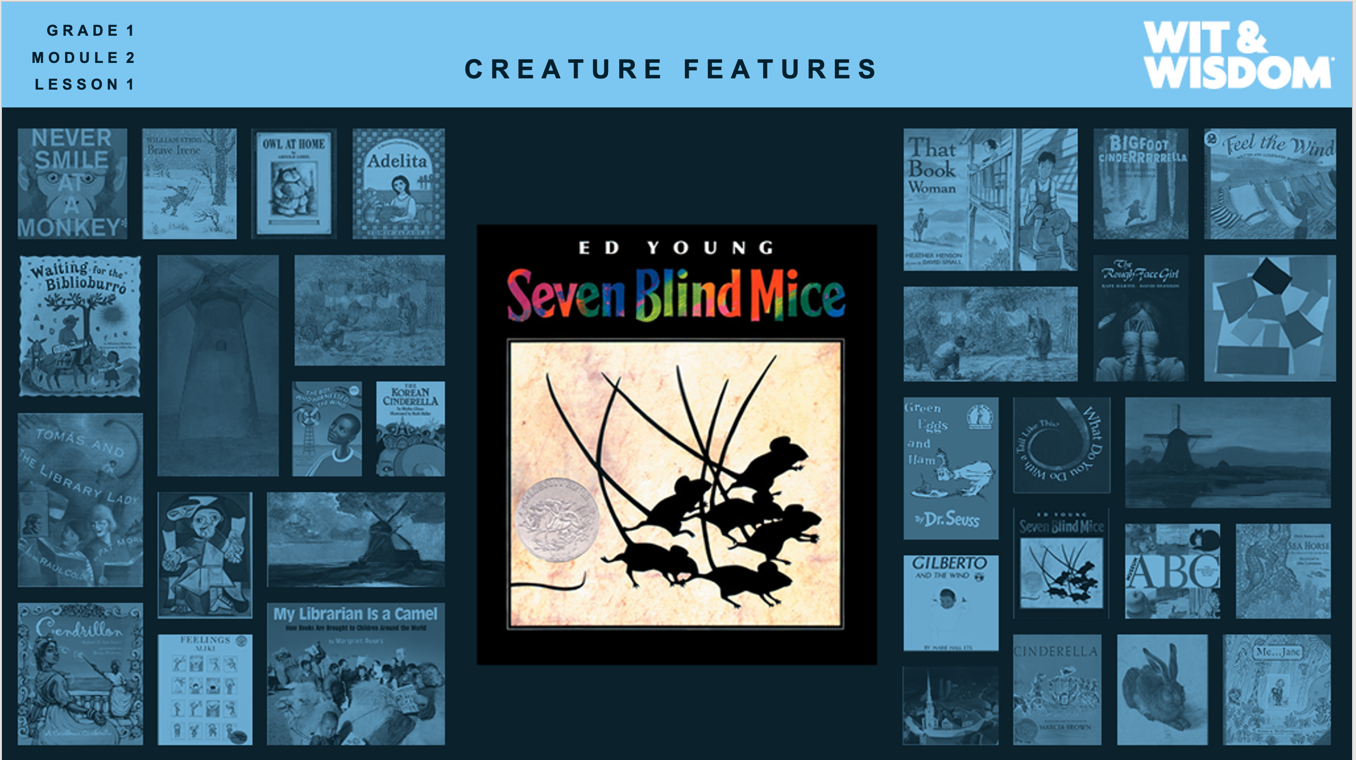
-
Module Summary
The happiness of the bee and the dolphin is to exist. For man it is to know that and to wonder at it.
—Jacques Yves Cousteau
What makes animals fascinating to people? How do people observe animals to learn about their features? How are the features of animals’ bodies similar and different? What can people learn from observing animals and why is it important?
People have been fascinated with observing, describing, and depicting animals for as long as both have shared this planet. Young learners, in particular, are riveted by the diversity of animals in our jungles and oceans, and a Grade 1 curriculum would not be complete without an opportunity for students to look deeply at the natural world through the lens of high-quality, content-rich texts and works of art.
Through this module, students discover the diverse characteristics, or features, of all kinds of creatures and identify the commonalities across species. By describing both the main ideas and details, students unlock complex messages in informational texts. As they write informative/explanatory responses to text and draw animals, students build the structure and complexity of their writing and thinking in service of developing their own animal expertise in creating animal trading cards.
This module opens with three animal fables: two classic Aesop’s Fables and the award-winning and vibrantly illustrated Seven Blind Mice. These texts build on the work with central messages begun in Module 1 while showing students the lessons they can learn from stories about animals. Students also get introduced to two works of art: Henri Matisse’s The Snail and Albrecht Dürer’s Young Hare. Through examining these works, students uncover the theme of this module and how artists harness their fascination with animals to portray their features in art. Next, through a visually stunning narrative informational biography, Me…Jane by Patrick McDonell, students meet 10-year-old Jane Goodall, who spent her childhood enchanted by the wonders of the natural world. This Caldecott Honor book provides a framework for asking and answering questions about the text and illustrations to uncover how and why naturalists observe the features of animals’ bodies and behaviors. Students continue their exploration of animals through Sea Horse: The Shyest Fish in the Sea by Chris Butterworth, whose detailed and layered illustrations and language reveal more with every read. In the final close reads of the module, learners mine the skillfully crafted, interactive informational texts What Do You Do With a Tail Like This? by Steve Jenkins and Robin Page (another Caldecott Honor book) and Never Smile at a Monkey (also by Jenkins) for fascinating facts about animal features and how they can use that knowledge to understand how animals survive and keep people safe.
As the culmination of this work for their End-of-Module (EOM) Task, students create large trading cards focusing on one animal from one of the module texts. Students participate in a shared research project as they gather evidence about these animals from multiple texts over the course of the module. An authentic audience for this polished work motivates students to engage more deeply in quality craftsmanship.
-
Texts
- Picture Books, Literary
- Seven Blind Mice, Ed Young
- Picture Books, Informational
- Me…Jane, Patrick McDonnell
- Never Smile at a Monkey, Steve Jenkins
- Sea Horse: The Shyest Fish in the Sea, Chris Butterworth, John Lawrence
- What Do You Do With a Tail Like This?, Steve Jenkins, Robin Page

